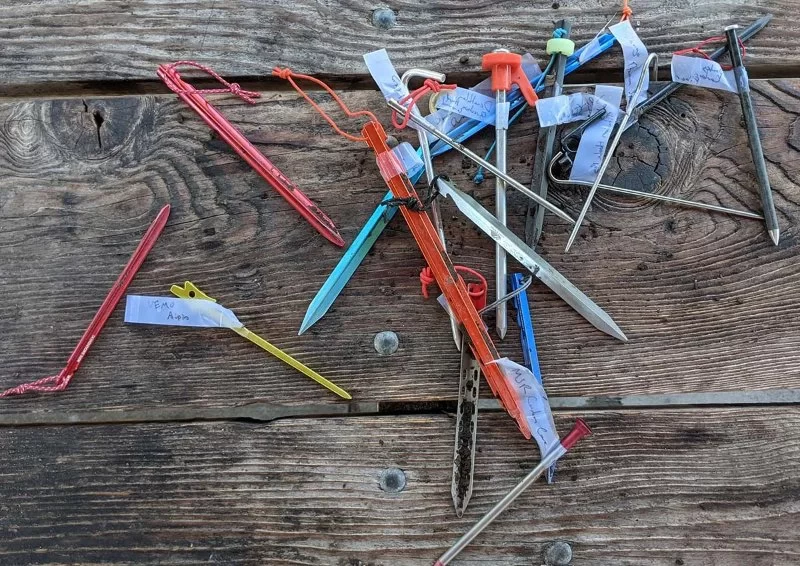- #choosing-the-right-tent-stakes-for-mixed-terrain – stake-types – durability-and-weight
- #understanding-mixed-terrain-challenges – soil-types – weather-impact
- #material-and-design-considerations – aluminum-vs-steel – specialized-shapes
- #real-world-camping-experiences – lessons-from-the-field – product-recommendations
- #tips-for-maintaining-and-storing-tent-stakes – cleaning-methods – storage-solutions
Choosing the Right Tent Stakes for Mixed Terrain
Why Your Choice of Tent Stakes Matters
When camping across different landscapes, from soft forest soil to rocky mountain ground, the wrong tent stake can mean a restless night or even a collapsed shelter. Tent stakes may seem small, but they are your first line of defense against wind, rain, and unstable ground. Selecting the right ones ensures your tent stays secure no matter the conditions.
Durability vs. Weight
For mixed terrain, campers often face a trade-off between lightweight stakes for easy packing and heavy-duty stakes for maximum holding power. Backpackers might prefer aluminum for weight savings, while car campers can opt for steel or titanium for rugged stability.
Understanding Mixed Terrain Challenges
How Different Soils Affect Holding Power
Sandy beach soil requires wider, flat stakes to grip effectively, while compact clay or rocky ground demands narrow, strong stakes that can be hammered in without bending. Mixed terrain trips often include a combination of both, making versatility a key factor in your decision.
Weather’s Role in Stake Performance
Heavy rain can soften soil, causing stakes to loosen. In high winds, improperly chosen stakes can pull free. This is why experienced campers carry at least two different stake types to adapt to changing conditions.
Material and Design Considerations
Aluminum vs. Steel: Which to Choose?
Aluminum stakes are lighter and resist corrosion, making them ideal for long treks. Steel stakes, though heavier, offer unmatched strength in rocky or frozen ground. Some hybrid designs combine aluminum shafts with steel tips for the best of both worlds.
Specialized Shapes for Specific Needs
Y-stakes and V-stakes provide greater holding power in loose soil, while nail stakes excel in penetrating tough ground. Spiral stakes, popular among beach campers, twist into sand for a firm grip.
Real-World Camping Experiences
Lessons from the Field
On a recent group trip to Pine Cliff Resort, a camper shared how his mismatched stakes nearly cost him his tent during a sudden storm. After switching to a mixed set—wide stakes for the soft riverside soil and steel nail stakes for rocky patches—his shelter stayed put even as winds topped 30 mph.
Recommended Products for Versatility
Brands like MSR, REI Co-op, and DAC offer stakes specifically designed for varied conditions. Investing in a small kit with multiple stake types ensures you’re ready for whatever terrain you encounter.
Tips for Maintaining and Storing Tent Stakes
Cleaning After Each Trip
Remove dirt and debris with warm water and a soft brush. Avoid using harsh chemicals that could damage protective coatings.
Proper Storage to Extend Lifespan
Keep stakes in a dedicated pouch to prevent them from bending or scratching other gear. Storing them dry prevents rust and ensures they’re ready for your next adventure.







